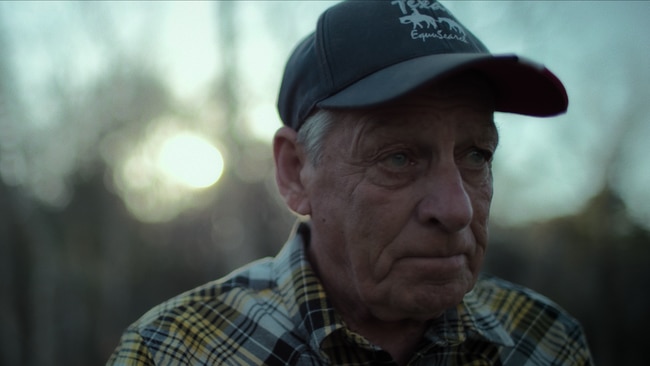Unsolved murders grip state: Texas Killing Fields TV review
The series focuses on the “geography” of murder, and the intimate and profound relationships killers have with the landscape in which they commit their crimes and dump their victims’ bodies.

I’ve just caught up with The Texas Killing Fields, the latest in filmmaker Joe Berlinger’s fascinating Crime Scene, a series of true-crime documentaries. The series focuses on the “geography” of murder, and the intimate and profound relationships killers have with the landscape in which they commit their crimes and dump their victims’ bodies.
Oscar-nominated, Emmy-winning Berlinger has become something of a staple for Netflix in recent times. A pioneer in the development of highly successful complex true-crime series, he’s helped reinvent the genre with his highly cinematic approach to documentary and his empathetic commitment to social justice.
From his earliest work, Brother’s Keeper and Paradise Lost in the 1990s, to his Netflix projects like 2020’s Jeffrey Epstein: Filthy Rich, 2019’s Conversations With A Killer: The Ted Bundy Tapes, and this recent Crime Scene series, Berlinger has consistently treated traumatic subjects with sensitivity. His stories are socially responsible in their treatment and validation of victims but also cautionary tales.
I first came across his work some years ago with Cold Blooded: The Clutter Family Murders where Berlinger, searched for a deeper truth about the terrible murders documented by Truman Capote’s In Cold Blood. He believed the price paid by Capote’s success was the way that historically the Clutter family has been treated as a side note and either misrepresented or not represented at all.
Berlinger says that production company Imagine, founded by Ron Howard and Brian Grazer, came to him with the idea of a true-crime documentary series based on events that occurred at the Hotel Cecil in Los Angeles. But after some discussion, according to the director, they said, “No. Let’s pull the lens wider to tweak the true crime genre.”
So, instead of just looking at an individual crime, they decided together “to use the Cecil to launch a series that takes a look at how specific locations and social forces around those locations aid and abet crime”.
Each season of this show would focus on a notorious place in true crime history and “turn the true crime genre on its head a little bit”.
He says he was normally doing stories about individual criminals or individual crimes and, as he had done these shows, often wondered what it is about a specific place that contributes. “I often thought to myself, ‘What is it about Seattle and the Pacific Northwest during that time period that allowed a Bundy to flourish and to get away with it for so long?’” He also wondered about just what it was about South Boston that propelled the feared Whitey Bulger, sentenced for his role in 11 murders. Or why the community of West Memphis would be so blinded by the truth that they sentenced three men to death, a story Berlinger documented in Paradise Lost.
It was an inspired idea, to take a notion so basic to crime fiction and change the way true crime is depicted and analysed. In crime fiction, crime is usually an intrusion in an orderly society; it occurs in a real setting and a culture particular to a place.
The crime is committed in a landscape that defines the physical context of the story and setting is a major factor in determining the illusion of reality.
And the same is obviously something that also applies to true crime, though it’s rarely one of the rabbit holes its TV practitioners go down. Its focus, particularly at the prestige end of the market, is character sketches, slick and creative production values, strong reporting and often with an emphasis on the creation of the story itself and the process of researching it.
Last year the series arrived with two instalments: The Vanishing at the Cecil Hotel, which focused on the 2013 death of Elisa Lam at the seedy Los Angeles hotel of the title, and The Times Square Killer, which looked at the heinous affairs of serial killer Richard Cottingham.
In The Texas Killing Fields, Berlinger leaves the directing to Jessica Dimmock, better known as a decorated photojournalist, though her previous documentary work includes the true-crime series Captive Audience, about the 1972 kidnapping of Steven Stayner and the shocking way the suffering tormented his family for decades fearing the worst.
The first episode “Nobody Sees Anything” sets up the terrible geography between Houston and Galveston just off the 1-45 Highway, 80km of desolation often referred to as the “Highway of Hell”. But it gained its gruesome name as “the Texas Killing Fields” after more than 30 bodies were discovered in the marshy scrub, rubbish like old mattresses, couches and fridges discarded helter skelter between 1971 and 2006. (The moniker was a nickname that stuck after the 1984 Cambodian war drama The Killing Fields.)
Most were young women and few of their murders have been solved. The local police initially in those cases were sceptical and uninterested. A place called Calder Road Field is at the centre of this tawdry story. It is a dirt road with a dead end owned by one of the petrochemical companies whose plants dominate the landscape. It’s a dispiriting place where bad things happen and an easy location in which to dump a body from a car and get away with it.
As Tim Miller – a tired, gnarled man with a huge heart, who has looked for answers since his daughter disappeared in 1986 – says at the beginning: “I became obsessed with this place.”
Dimmock’s cameras follow him constantly as he wanders about Calder Road, still searching for clues. Sometimes he visits a victim’s memorial. “I remember one night I came out here and I had my .357 Magnum. I shot that thing six times hoping the cops would come. Nobody came.” Miller is central to Dimmock’s story, founding an equine search group that has assisted in hundreds of cases following his daughter’s disappearance.
She follows the terrible fates of Laura Miller, Heidi Villareal Fye, Audrey Lee Cook, and Donna Prudhomme though interviews with their families, press accounts and the testimony of journalists and writers who have covered their stories. Why they were killed remains a mystery but their families have never given up their fervent commitment to hold someone accountable. Calder Road is the other central character in Dimmock’s narrative, constantly referenced by drone shots, slow tracking sequences of forbidding heavy scrub, and shifting close-ups of yellowing maps of the area. There’s a sense that’s almost supernatural about the place, full of menace and foreboding, practically breathing, a dumping ground waiting for victims.
“It’s wet, it’s damp, it’s swampy,” Dimmock told The Independent.
“And that is really one of the factors. It’s not the only factor, but that’s really one of the factors that kind of leads to these circumstances. Water destroys evidence.
“Also, criminals and murderers know that water destroys evidence. So not only does it actually happen, it also plays into how these killers think about where to dispose of bodies.”
One of the standouts of Dimmock’s investigation into the deaths of these young women is the degree of ineptitude and disregard shown by local law enforcement. The League City Police Department, lead agency in the investigations, declined requests to be interviewed for the series.
Miller says he badgered them and constantly presented leads to no avail. “They did their best to convince me I had lost my mind,” he says. And, “If you want to commit a crime do it here because they sure can’t solve it.” Like the other parents represented in Dimmock’s series, he was told “She’s probably a runaway” or “She’ll come back in time”.
She incorporates a degree of found footage, newsreels and TV coverage, family photographs and artfully filmed interviews. She also makes judicious use of tape recordings and journals disregarded by the police at the time, but enduring she doesn’t hinder further investigations.
“We really wanted to make sure that we were using those journals in a way that spoke to the effort and not about any specific finger pointing,” she explains. She also employs a clever effect where she highlights central sections of newspaper stories, pulling out the germane details from the surrounding print.
Re-enactments are used sparingly, often in an almost abstract way to emphasise keys moments in the narration of family members, in no way intrusive. She, along with Berlinger, embraces the Ken Burns notion that cinematic manipulation should be embraced in the process of effective storytelling.
Dimmock shows so vividly how place is the ghost in the machine of the narrative, as it were – the focus of the social forces that led to these wanton crimes.
The Texas Killing Fields, streaming on Netflix.




To join the conversation, please log in. Don't have an account? Register
Join the conversation, you are commenting as Logout